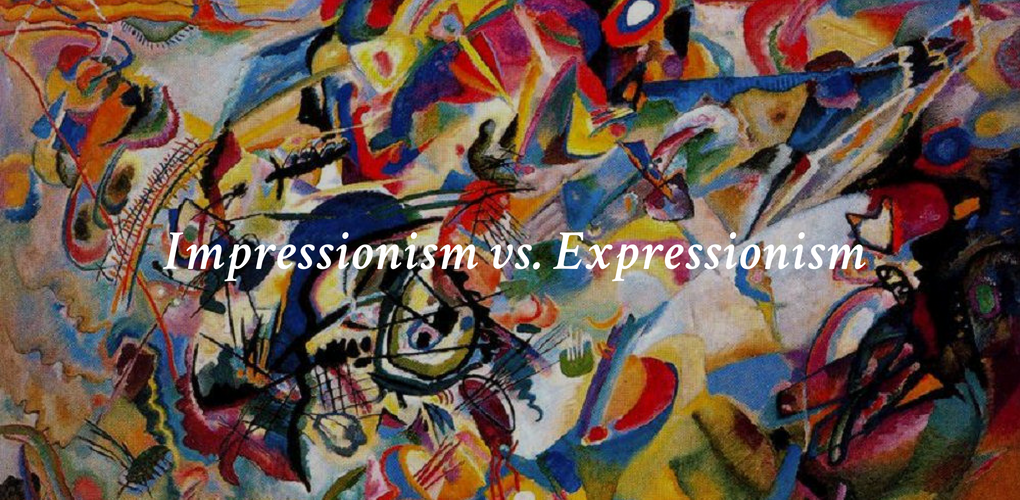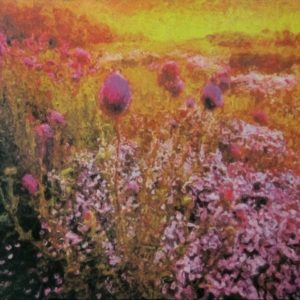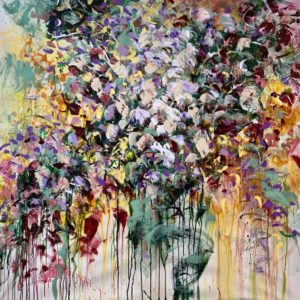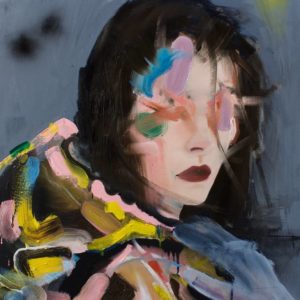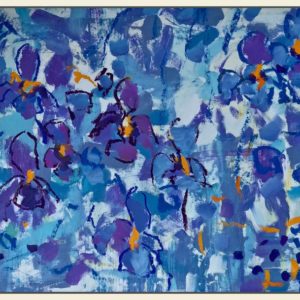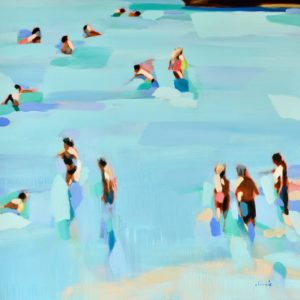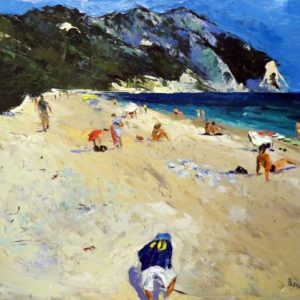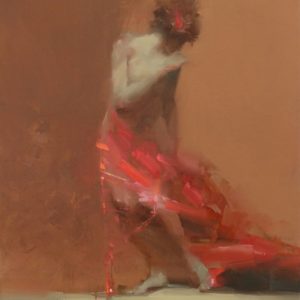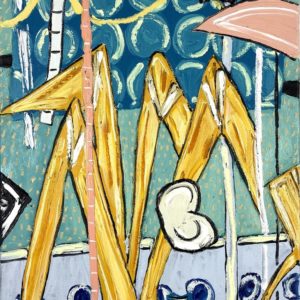Art History 101
Impressionism vs. Expressionism
Both Impressionism and Expressionism emerged around the turn of the 20th century as a response to a newly modernized lifestyle. But what sets these movements apart from one another?
Impressionists like Claude Monet and Pierre-Auguste Renoir are known for their flurried brushstrokes. Expressionists including Wassily Kandinsky and Ernst Ludwig Kirchner, on the other hand, focused on vivid color and emotions. Do you prefer the spontaneity of Impressionism or the intensity of Expressionism?

History of Impressionism
Impressionism originated in late 19th century Paris, when artists including Claude Monet, Camille Pissarro, and Alfred Sisley formed the Anonymous Society of Painters, Sculptors, and Engravers. The movement served as a reaction to a rapidly changing urban environment. These artists rejected traditional realism and instead focused on spontaneous brushstrokes, vibrant colors, and subjects taken from newly modernized life.
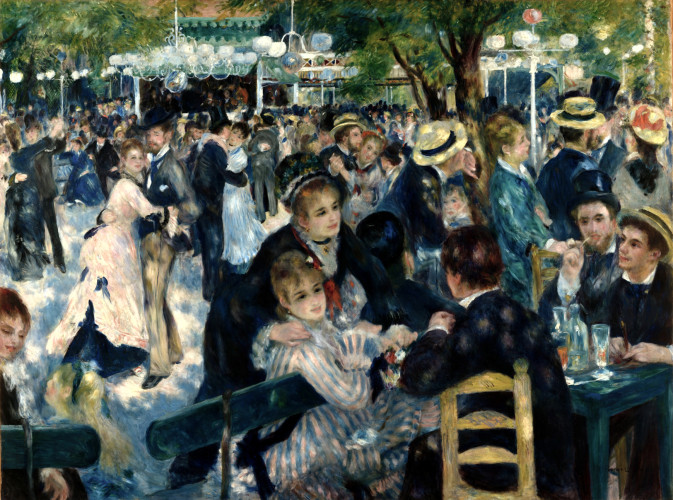
Impressionism Characteristics
Impressionists experimented with color using a more optical method, mixing unblended pigments to create a nebulous blend of pure color. These artists also worked with short, hurried brushstrokes, often because they worked quickly outdoors. Impressionists also explored the theme of isolation in a newly crowded society through their subject’s gaze, which rarely met those of others in the same scene. Similarly, artists would also add physical barriers, such as balconies and bars, between subjects in their composition.
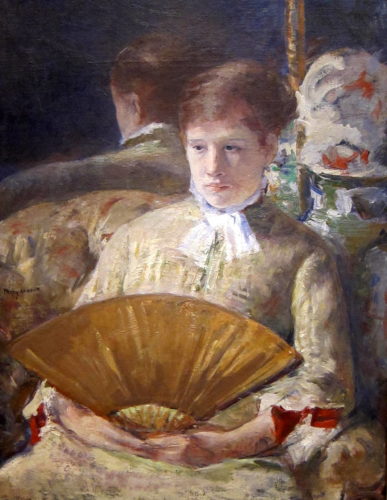
Key Impressionist Artists
Claude Monet is perhaps the most famous Impressionist painter. He is known for his serene landscape works, including his expansive “Water Lilies” series. Pierre-Auguste Renoir focused on a leisurely subjects in paintings like “Le Moulin de la Galette” (1876). Edgar Degas pushed the limits of oil paint by experimenting with pastel and gouache in his works depicting ballerinas and female nudes. Fellow Impressionists include Camille Pissarro, Mary Cassatt, Berthe Morisot, Alfred Sisley, and Gustave Caillebotte.
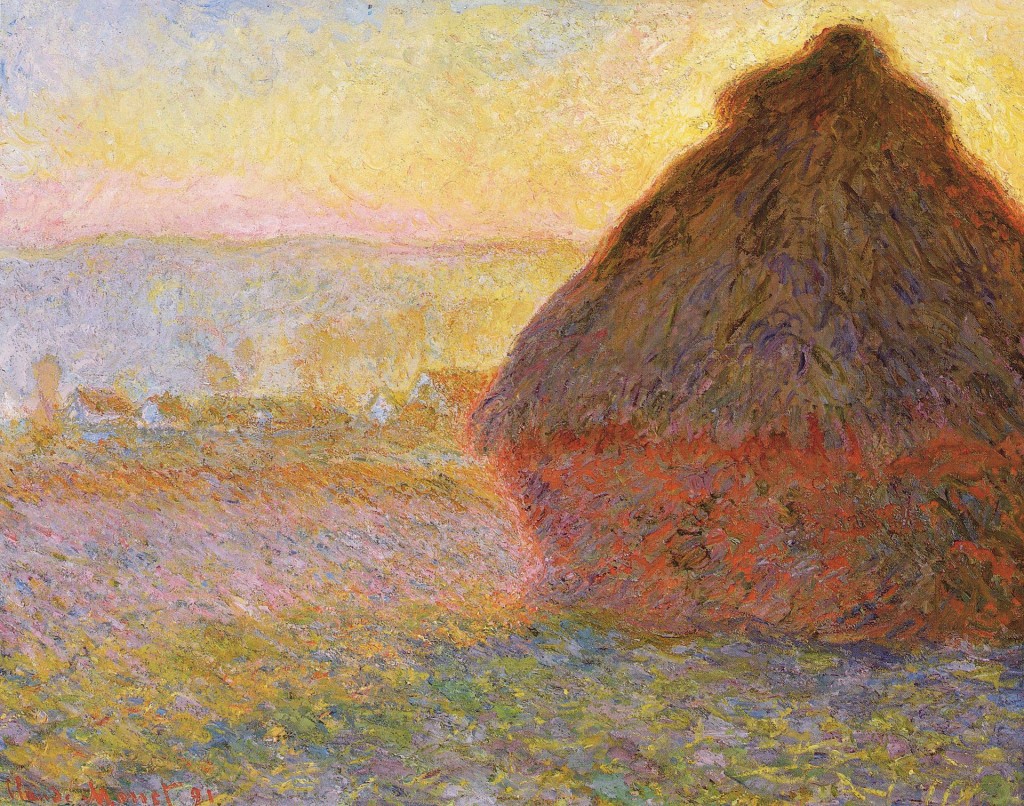
History of Expressionism
Expressionism developed in Germany and Austria in the early 20th century, again as a response to the dehumanizing effects of industrialization. Artist groups credited with founding the movement included the likes of Ernst Ludwig Kirchner and Wassily Kandinsky. Expressionist artists turned to lurid color, gestural brushstrokes, and distorted subjects to channel intense, genuine emotions through their works.
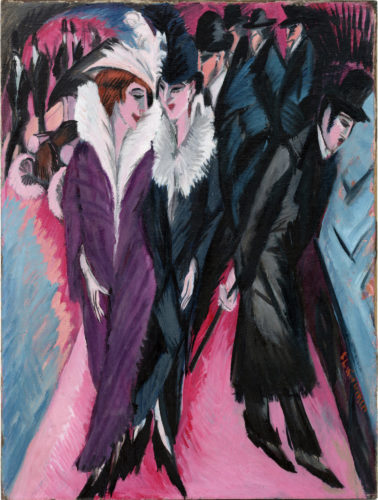
Expressionism Characteristics
Expressionists used bold, solid hues and gestural brushstrokes to convey extreme emotions. Wassily Kandinsky even assigned colors to different feelings (red for joy, yellow for anger, etc.). These artists used arbitrary colors in their works, meaning subjects were depicted in colors that had no natural relation to them (a green face, an orange sky, etc.). Their distorted subjects also illustrated new anxieties and isolation in urban life.

Key Expressionist Artists
Ernst Ludwig Kirchner, a founding member of The Bridge German Expressionist group, captured the frenzy of modern city life in intensely colored works like “Street, Dresden” (1908). Wassily Kandinsky took a more abstract approach in paintings like “Composition 6’ (1913), playing with color and its symbolic reference to certain emotions. Other key artists in the movement include Franz Marc, Erich Heckel, Paul Klee, Emil Nolde, Karl Schmidt-Rotluff, Edvard Munch, and Otto Dix.

“Anxiety” (1894), Edvard Munch. (Image: Wikipedia)
Artists today continue to be inspired by the Impressionist and Expressionist movements. Discover art by contemporary Impressionist artists on Saatchi Art in our Inspired by Monet Collection. Or shop fantastic new Expressionist art by checking out our Inspired by Expressionism Collection.
Love reading about all things art? You can have articles from Canvas, curated collections and stories about emerging artists delivered straight to your inbox. Sign up for the Saatchi Art Newsletter.
